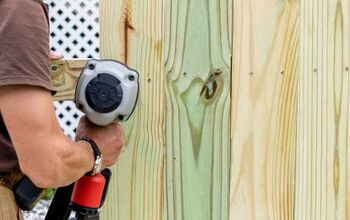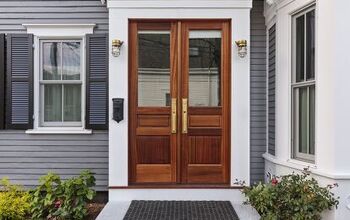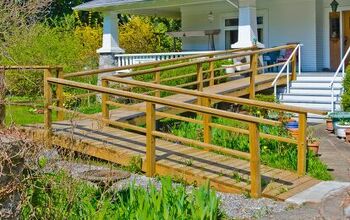Do You Need A Permit For A Freestanding Carport? (Find Out Now!)

From metal buildings to traditional stick-built, carports are an excellent addition to almost every home. You can get many delivered ready to set up and others you can construct by hand. Your options are almost endless, but do you need a permit for a freestanding carport?
A carport can be very useful for any car owner. However, due to limitations, you should carefully research what is required for legal compliance. Every county and state have separate requirements but in general, yes, you will need a permit for a freestanding carport.
Do You Need to Hire Carport Builders?
Get free, zero-commitment quotes from pro contractors near you.

What Defines A Carport?
Generalized definitions of each building are fairly straightforward: a carport lacks walls and garages have walls. Garages can be attached or a separate building; carports are generally not a building. Plan on asking your permit office to clarify the regulations before beginning to build.
Freestanding carports are not attached to other structures. Some areas may consider any attached carport as a garage which can have different regulations.
State Standards For A Permit For A Freestanding Carport
Requirements vary according to jurisdiction, usually county or city governments. Within those governments are separate offices: code enforcement and the permit office.
Both will have specific rules and protocols to follow. Some areas are laxer with permit requirements than others.
For example, in some counties, you can put up a small shed without a permit. However, in others, you might need a permit for a swing set.
What You Need To Know Before Calling The Permit Office
Most states require a permit before building, some even require a plan. Each jurisdiction has different codes and requirements. Be sure to check with your city and county before proceeding.
HOAs can be malicious, they are often run by collecting fees. Violations can stack up and in many cases be perfectly legal. Carefully comb over your association paperwork to check if you can, in fact, build a carport on the property.
When in doubt, contact the board of your homeowners’ association to verify the rules. The county or town can strictly enforce certain covenants in your deed.
Carefully go over this paperwork as well. Your neighbors will likely be held to the same standards and sue you in civil court if you violate the deed restrictions.
Requirements For A Permit To Build A Freestanding Carport
Once again, each jurisdiction might have a different process. No matter where you are, permit offices will require an application, which may have a fee. Give yourself plenty of time to complete the paperwork and get the permit before moving forward.
Be sure to refrain from building your carport before the permit office has given its approval. Jumping the gun may cost you time, effort, and money. If you are not building the carport, contractors familiar with the permit office can bypass waiting periods.
At times the permit office will require a site plan. This requirement is usually due to regulations regarding disturbing dirt and protected water. The fines for these violations can be costly, so it’s best to wait until the office gives you the okay.
Keep in mind you may need a site plan for any grading involved. Having proof of permits to show the inspector will help improve your odds when selling your house and property.
Restrictions For A Freestanding Carport
As each area of the country can vary in its definition of a carport, the restrictions can vary greatly. Size, position, material, and codes can all affect your options.
Carports, by definition, cannot be attached to an existing structure. Two walls may exist, but that is the maximum: three or four walls are considered a garage. A garage will have its own set of rules and regulations.
HOAs, zoning codes, and deed covenants will often put limitations on the material and sizes of carports. Most often, they will require a cohesive design that fits in with the existing structure and the neighborhood.
Code enforcement can restrict certain structures as well. Often, the deed covenants will be more restrictive than the zoning code enforcement may require. While they may not enforce those restrictions, you could be sued in civil court.
What If You Lease?
If you lease the property, additional requirements and restrictions will apply. You should contact the leaseholder/owner to obtain permission. In most cases, it will depend on how permanent the carport will be.
Check your lease and ask plenty of questions to clarify what your options are.
Remember that most additions or changes to a home or other structure will likely require a permit. Replacing windows or doors will need a permit if they require changes to the existing structure. When in doubt, ask.
Appearance
Carports come in an assortment of styles and an array of materials. The most common are simple metal structures that are easy to build and lightweight. All have the common component of having two walls or less and lacking a door.
Cohesive designs that complement the existing structure will be more convincing to the eagle eye of your local HOA. Matching colors and materials are favorable to the unsightly and cheap ones. Carefully read over the restrictions of your deed and HOA before settling on the specific carport.
Matching the shingles or metal roof of the house or other existing structures will present a more cohesive design. Research your options and verify their legality before moving forward. In the event the permit is denied based on your plans, look at your neighbors’ homes in your HOA.
Pricing
Prices will significantly vary depending on the company. Metal buildings will fluctuate in price depending on the demand and price of steel. The size will primarily determine the cost as well as installation.
Building one yourself is a cost-effective way to build a carport. Some companies will bring the materials and build them for you for an additional fee. Be sure to ask first if this is important to you.
Steel is the most expensive material for a carport. Prices for steel ones can range anywhere from $1,500 for small to over $20,000 for large. Prefab pieces are the most economical and easiest to build yourself.
The price fluctuation of metal and wood will greatly affect the value and the price of the carport.
How Much Does It Cost For A Permit To Build A Freestanding Carport?
Although permit fees vary from place to place, a building permit for a freestanding carport costs about $100 to $300. If you plan to add any electrical to the carport, even an outlet, you will likely also need an electrical permit.
Since your project can include various components, this is why many permit offices also require plans. When they can see your complete plans, they can better advise you on the necessary permits.
Do You Need to Hire Carport Builders?
Get free, zero-commitment quotes from pro contractors near you.

Related Questions
Do carports add value to your home?
With proper permitting and a cohesive design, carports can add value to your home. You can use a carport for the storage of vehicles as well as an outdoor space for entertaining. If installed correctly, the added value can be as much as $10,000.
What if you fail to get a permit to build a freestanding carport?
If you fail to get a necessary permit, you may face fines and other penalties. It can also cause delays when you go to sell your house.Depending on where you live, you might be able to apply for a retroactive permit. An inspector will assess the structure, and if it’s up to code, will issue the permit (after you pay a higher fee). However, in some cases, you may need to tear down the carport and redo it.

Stacy Randall is a wife, mother, and freelance writer from NOLA that has always had a love for DIY projects, home organization, and making spaces beautiful. Together with her husband, she has been spending the last several years lovingly renovating her grandparent's former home, making it their own and learning a lot about life along the way.
More by Stacy Randall



























